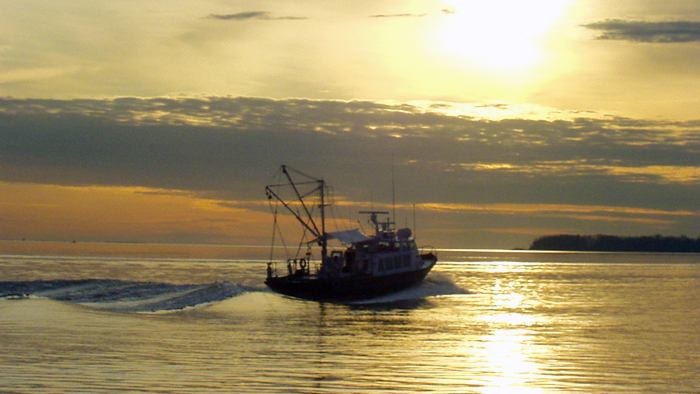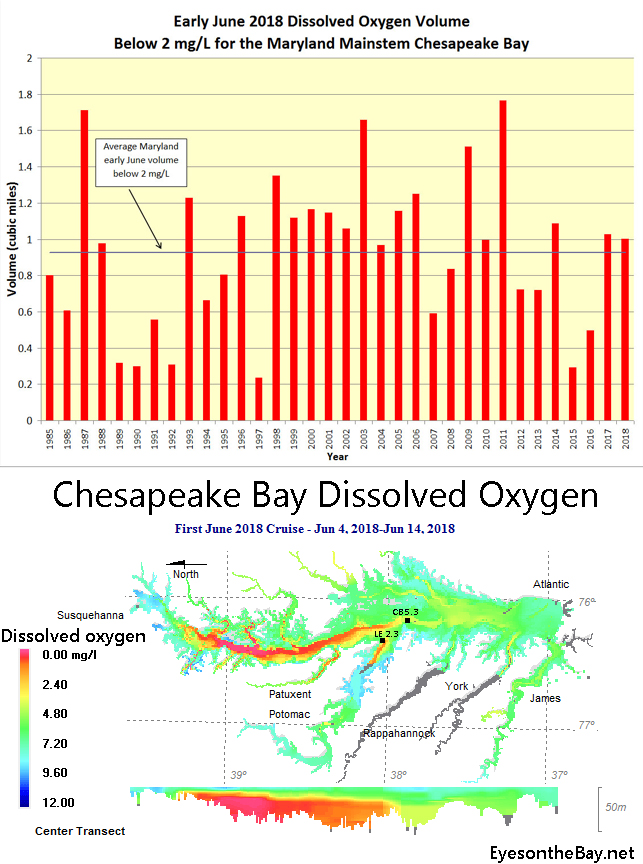Early June 2018 Hypoxia Report

Maryland Research Vessel Kehrin
Maryland and Virginia scientists have begun regularly collecting oxygen data as they monitor the health of Chesapeake Bay waters, and track the states’ progress toward restoring the treasured Chesapeake.
The Maryland Department of Natural Resources will track bay oxygen levels throughout the summer during twice-monthly monitoring cruises.
For early June 2018, dissolved oxygen conditions in Maryland’s portion of the Chesapeake Bay mainstem were slightly below average. The hypoxic water volume (areas with less than 2 mg/L oxygen) was 1.0 cubic mile, which is slightly above the early June average of 0.93 cubic miles.
Hypoxia was not observed in Virginia’s portion of the bay, and no anoxic zones (areas with less than 0.2 mg/L oxygen) were detected in Maryland or Virginia. It should be noted that due to rough seas, two stations – one at the mouth of the Potomac River, the other in the mid-channel at the Maryland-Virginia line – were not sampled. On average, these two stations can reduce hypoxia estimates by 1.3 percent.
The National Oceanic and Atmospheric Administration, U.S. Geological Survey, University of Maryland Center for Environmental Science and University of Michigan predicted a slightly larger than average hypoxic volume for Chesapeake Bay due to higher spring flows and nitrogen loading from the Susquehanna and Potomac rivers.
Scientists and natural resource managers study the volume and duration of bay hypoxia to determine possible impacts to bay life, including crabs, fish and oysters. Each year, from June through September, the Maryland Department of Natural Resources computes these volumes from data collected by Maryland and Virginia monitoring teams.
The Virginia mainstem is monitored by Old Dominion University under contract to Virginia Department of Environmental Quality. Data collection is funded by these states and the U.S. Environmental Protection Agency’s Chesapeake Bay Program.


 1-888-373-7888
1-888-373-7888 233733
233733